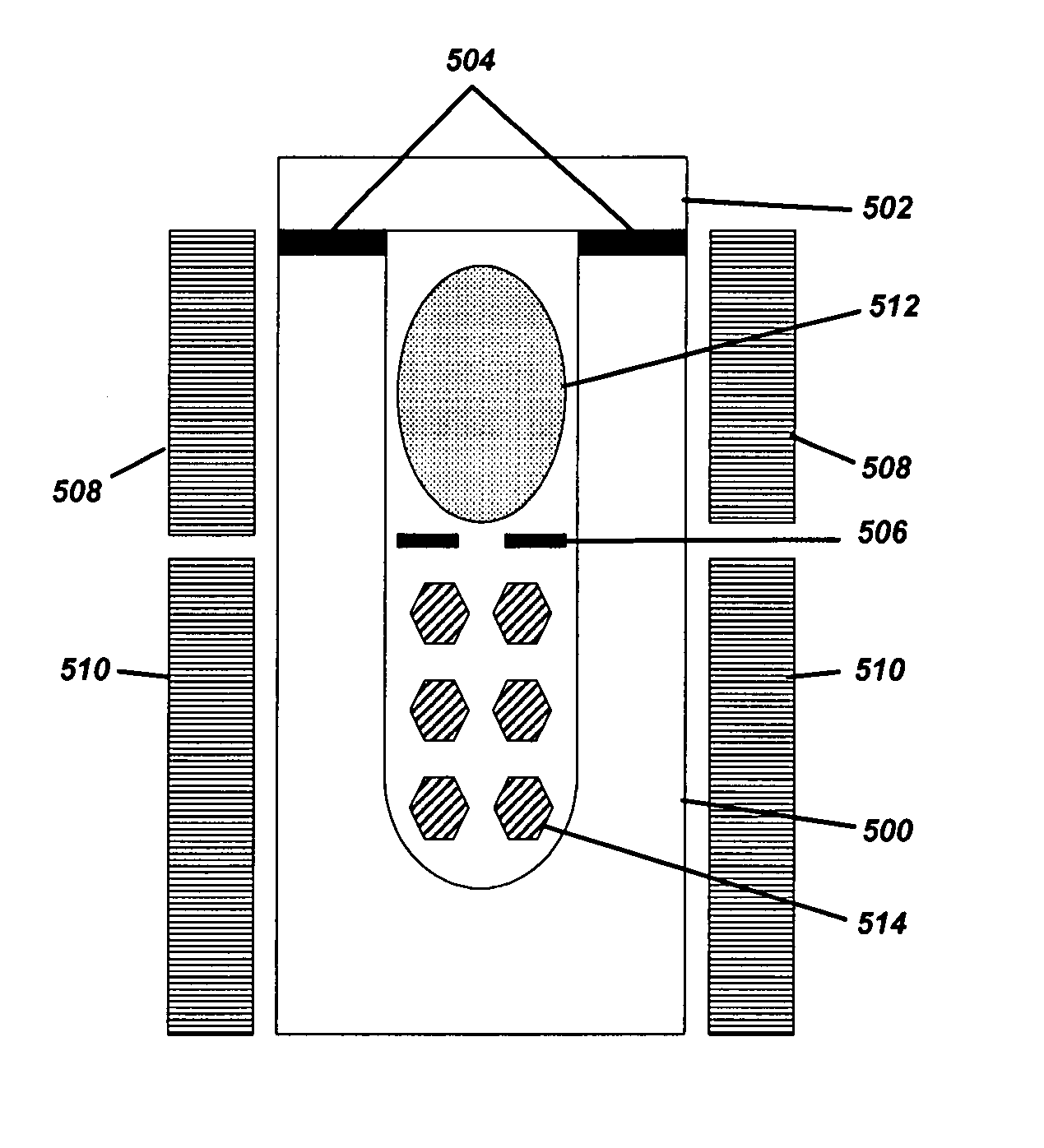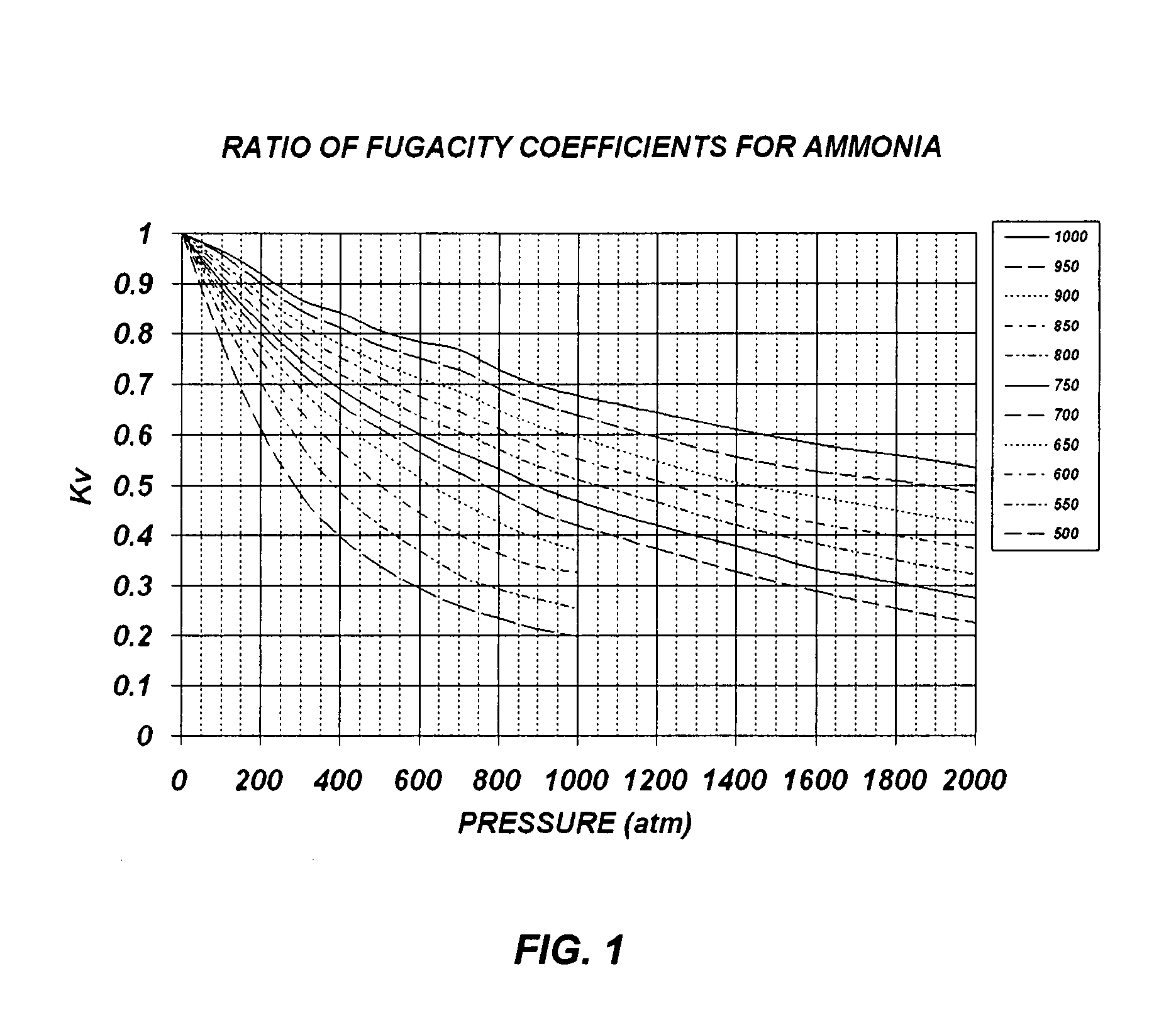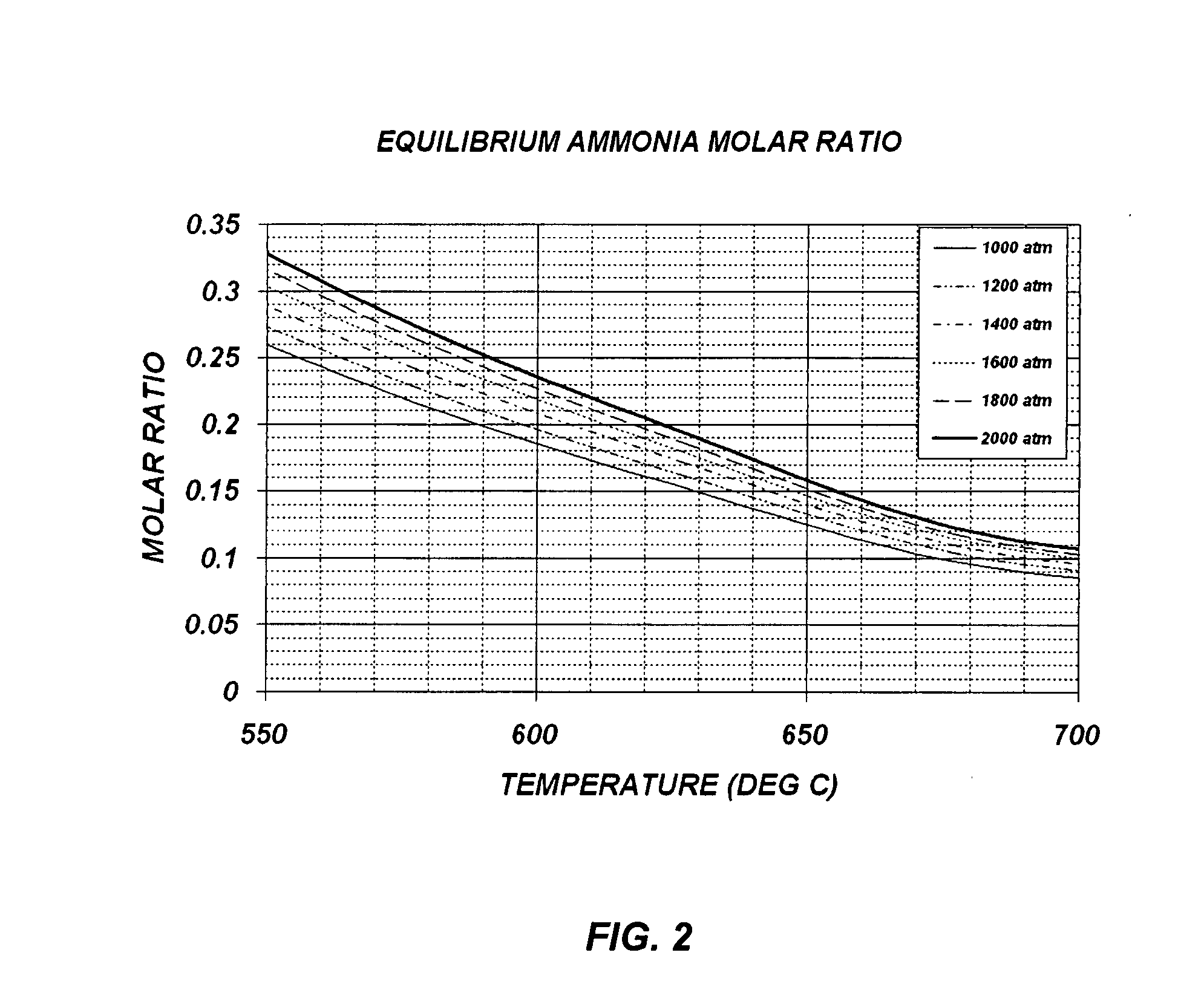Method for growing group III-nitride crystals in a mixture of supercritical ammonia and nitrogen, and group III-nitride crystals grown thereby
a technology of group iii-nitride and supercritical ammonia, which is applied in the direction of crystal growth process, polycrystalline material growth, aluminium compounds, etc., can solve the problem of low growth rate of group iii-nitride, and achieve high-speed growth , the effect of avoiding the dissociation of nh3
- Summary
- Abstract
- Description
- Claims
- Application Information
AI Technical Summary
Benefits of technology
Problems solved by technology
Method used
Image
Examples
example 1
[0045]Example 1 of the present invention describes how to grow single crystalline GaN bulk crystals with basic mineralizers (i.e. LiNH2, NaNH2 or KNH2) and polycrystalline GaN source materials. This example is based on FIGS. 3 and 5, where FIG. 3 is a flow chart of the ammonothermal growth process used in this example, and FIG. 5 is the ammonothermal growth apparatus used in this example. Since the crystallization region of the reaction vessel 500 is maintained at 550° C. or higher and the pressure of the reaction vessel 500 is typically higher than 1000 atm, the reaction vessel 500 must be constructed with a precipitation hardened Ni—Cr based superalloy, such as Rene 41, Inconel X-750, and Inconel 718. Although the basic ammonia does not cause any corrosion problem on these superalloy materials, an internal liner made of vanadium or Haynes 230 can be used to reduce impurities in the grown crystal.
[0046]The first step (300) is to place the GaN single crystalline seeds 514 in the cry...
example 2
[0053]Example 2 of the present invention describes how to grow single crystalline GaN bulk crystals with basic mineralizers (i.e. LiNE2, NaNH2 or KNH2) and metallic Ga source. This example is based on FIGS. 4 and 5, where FIG. 4 is a flow chart of the ammonothermal growth process used in this example, while FIG. 5 is the ammonothermal growth apparatus used in this example. Since the crystallization region of the reaction vessel 500 is maintained at 550° C. or higher, and the pressure of the reaction vessel 500 is typically higher than 1000 atm, the reaction vessel 500 must be constructed with a precipitation hardened Ni—Cr based superalloy, such as Rene 41, Inconel X-750, and Inconel 718. Although the basic ammonia does not cause any corrosion problem on these superalloy materials, an internal liner made of vanadium or Haynes 230 can be used to reduce impurities in the grown crystal.
[0054]The first step (400) is to place the GaN single crystalline seeds 514 in the crystallization re...
example 3
[0061]Example 3 of the present invention describes how to grow single crystalline GaN bulk crystals with acidic mineralizers (i.e. NH4F, NH4Cl, NH4Br or NH4I) and polycrystalline GaN source. This example is based on FIGS. 3 and 6, where FIG. 3 is a flow chart of the ammonothermal growth process used in this example, while FIG. 6 is an the ammonothermal growth apparatus used in this example. Since the crystallization region of the reaction vessel 600 is maintained at 550° C. or higher, and the pressure of the reaction vessel 600 is typically higher than 1000 atm, the reaction vessel 600 must be constructed with a precipitation hardened Ni—Cr based superalloy, such as Rene 41, Inconel X-750, and Inconel 718. In addition, since the acidic ammonia causes a serious corrosion problem on these superalloy materials, an internal liner made of platinum, palladium, or an alloy of platinum and palladium, must be used. This liner layer is also effective in reducing impurities in the grown crysta...
PUM
| Property | Measurement | Unit |
|---|---|---|
| Temperature | aaaaa | aaaaa |
| Temperature | aaaaa | aaaaa |
| Time | aaaaa | aaaaa |
Abstract
Description
Claims
Application Information
 Login to View More
Login to View More - R&D
- Intellectual Property
- Life Sciences
- Materials
- Tech Scout
- Unparalleled Data Quality
- Higher Quality Content
- 60% Fewer Hallucinations
Browse by: Latest US Patents, China's latest patents, Technical Efficacy Thesaurus, Application Domain, Technology Topic, Popular Technical Reports.
© 2025 PatSnap. All rights reserved.Legal|Privacy policy|Modern Slavery Act Transparency Statement|Sitemap|About US| Contact US: help@patsnap.com



